How to grow onions – from seed, sets and other onions
Find out how to grow onions from seed, sets and even other onions, in our complete guide
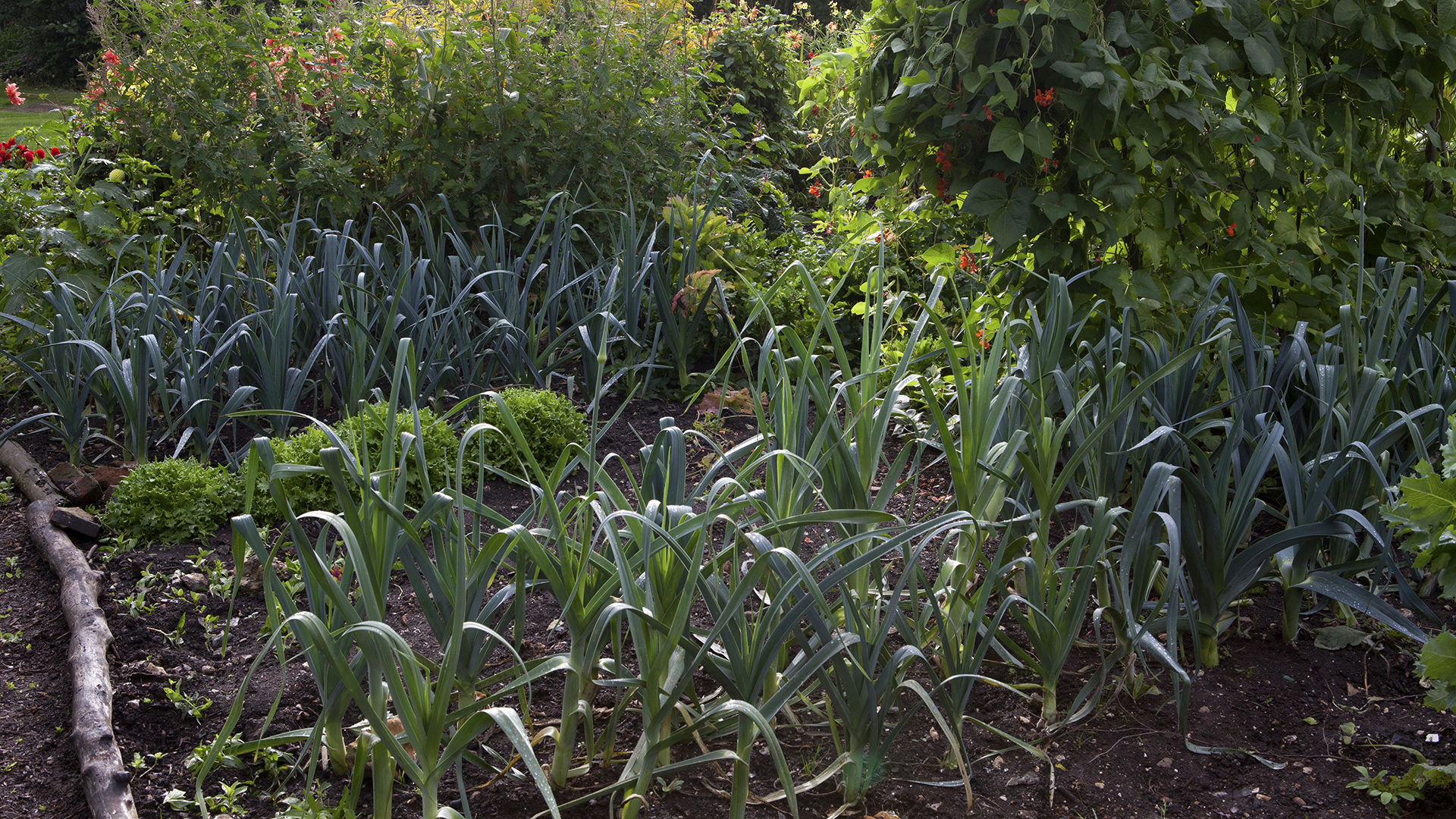

Armed with the skills and knowledge on how to grow onions, you can enjoy many different varieties and colors of this flavorsome bulb vegetable which you can't always find in supermarkets and grocery stores.
Onions are a top crop to include in your vegetable garden ideas for their sheer versatility. A staple in many types of cooking, from stews, curries, tarts and soups, to salads, sauces - as well as pickles and preserves – all onion varieties are easy to grow.
If stored properly, you can enjoy different varieties of home-grown onions – from yellow, white and red, to scallions and shallots - all year round.
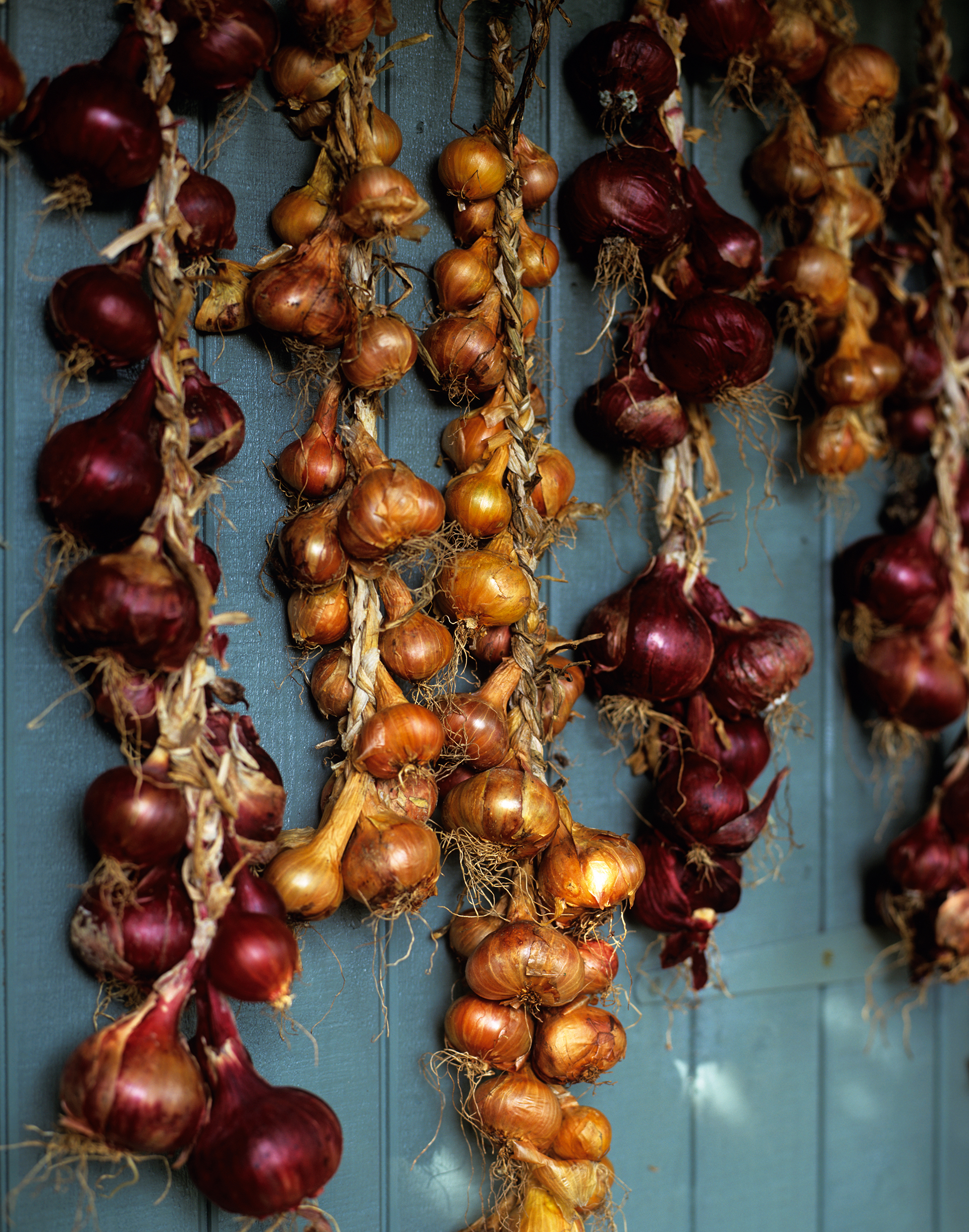
How to grow onions
There are a number of ways of growing onions, and the method you choose will depend on how quickly you want to be harvesting them, and the time of year you want to start the crop – and the kitchen garden ideas you have in mind.
'The thing to note about onions is that they grow over the course of two years. In the first season, onions will grow from a seed to a plant and then a dormant bulb. After a period of cold temperatures, onion bulbs will grow and flower in the second season,' explain the experts at Jackson's Greenhouse and Garden Center.
You can grow onions from seed, from sets (small bulbs), even other onions. If you carefully choose your onion companion planting you will have a better chance of a healthy crop, and ward off pests, such as onion fly.
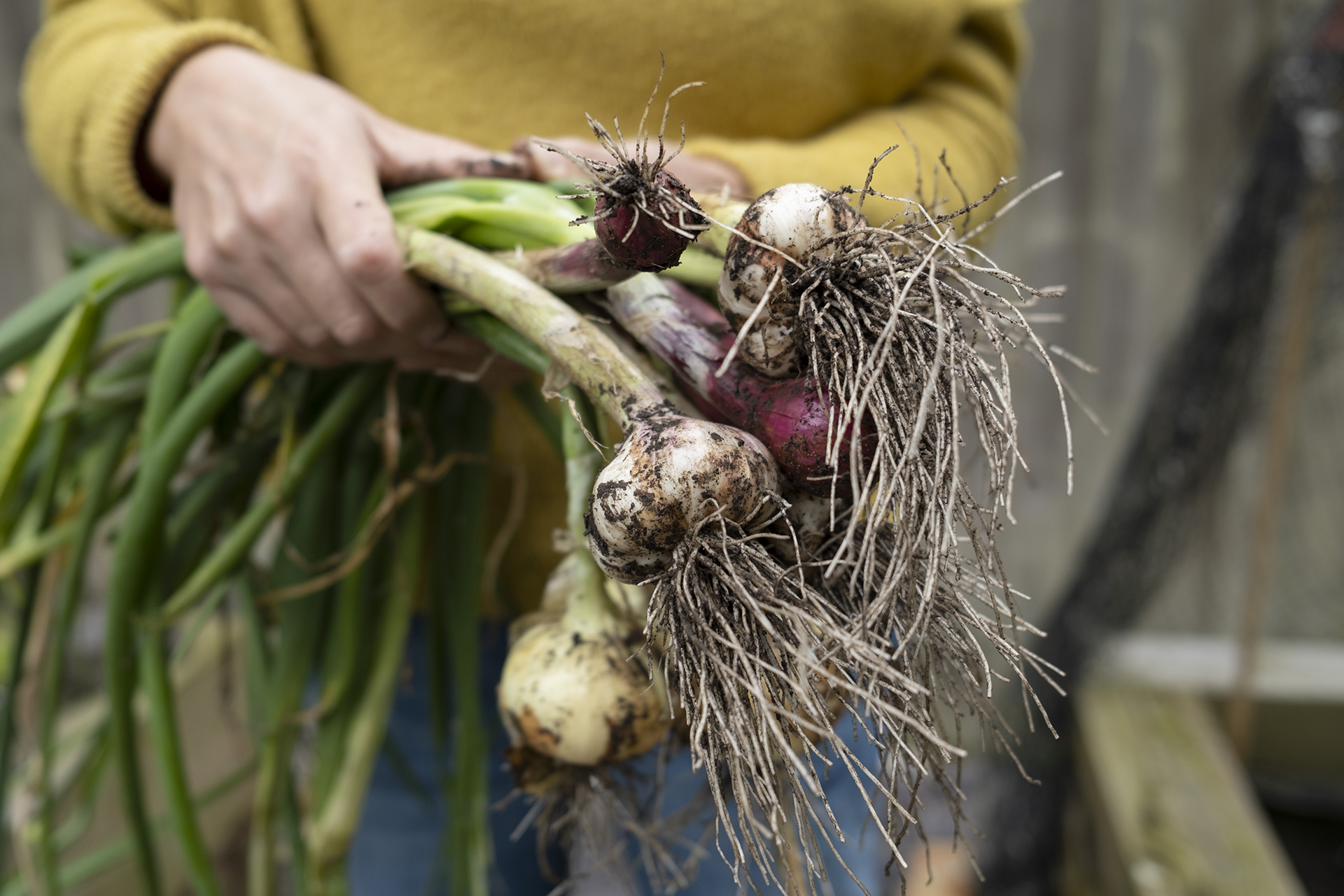
Is growing onions easy?
Yes, onions are easy to grow. 'If you can poke a hole into the ground, you can grow an onion from a little plant,' says Amy Enfield, horticulturist at Bonnies Plants.
'Onions are generally easy to grow, a versatile culinary ingredient perfect for adding delicious flavor to so many dishes, which makes them a must have addition to grow in any garden or allotment,' says Rob Smith, expert at Suttons.
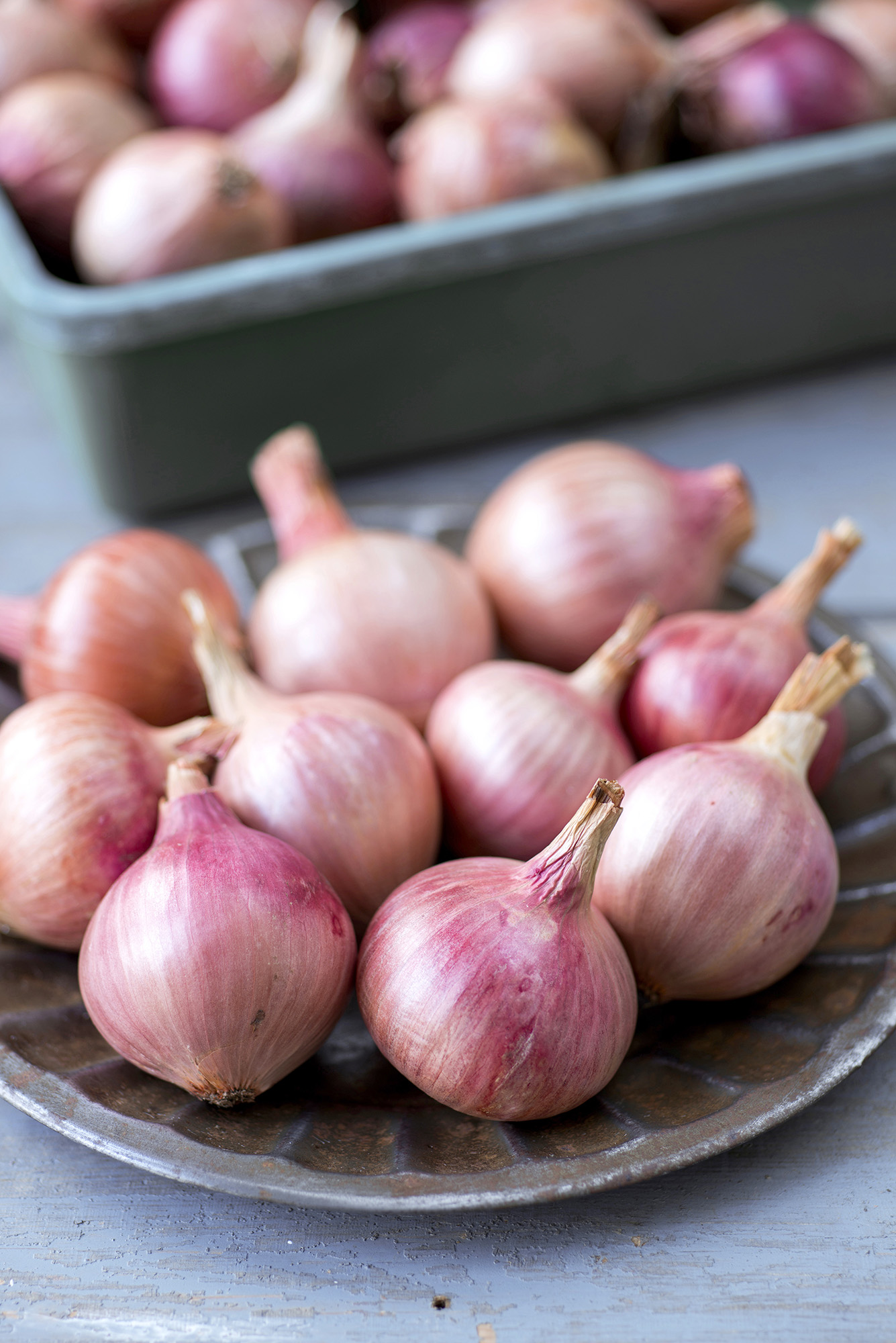
How to grow onions from sets
One of the easiest, quickest and cheapest ways to grow onions is from sets – small bulbs harvested in the first year of an onion's life cycle.
When to plant onions? Garden centers and online suppliers sell onion sets to plant in fall or spring.
'Because sets are in the second year of the onion’s life cycle, they are more likely to bolt, or grow a flower from the center of the bulb,' explains the experts at Jackson's. For this reason, many sets have been heat-treated so they are less likely to bolt.
Tip: Bigger sets are more likely to bolt, so choose smaller sets when it comes to growing onions from sets, as you're more likely to grow larger onions from them.
'Onions have a long growing season, so to be able to ripen you need to plant the sets in the ground as soon as possible,' explains Monty Don in a video for Gardeners' World.
To grow onions from sets in early spring or fall:
- Choose a sunny spot in the garden or raised beds for growing the onion crops.
- Plant in moisture retentive, fertile soil with plenty of well-rotted organic matter, such as aged compost, mixed in – they don't grow well in acid soil.
- Plant onion sets 6 inches (15cm) apart, buried just below the surface of the soil with the tips showing. 'You don’t want the part of the neck where the leaves grow away from the clear sheath to collect soil or water down between the young leaves, or they can rot,' explains Amy Enfield.
- Space rows 12 inches (30cm) apart.
- Feed occasionally with a general liquid fertilizer.
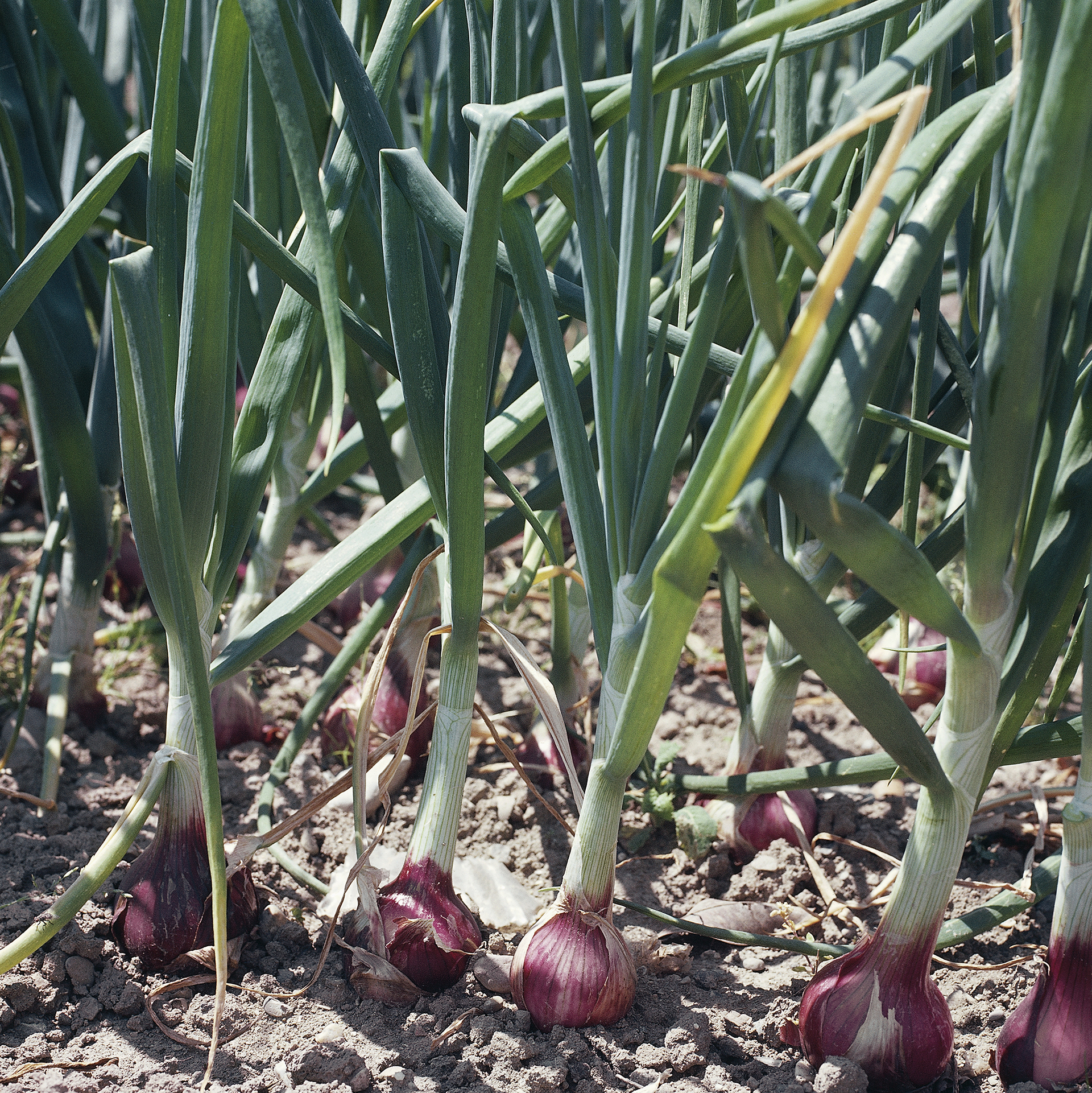
Growing onions from seed
Onions can be grown from seed, and this offers greater variety as there are many choices available from seed.
'You can try many different varieties of onion to grow from seed, such as Walla Walla, a sweet onion and mild in taste perfect used raw, roasted, baked or sautéed and won’t have you crying when prepping; to Isobel Rose, a true-pink skinned onion, ideal for use raw in salads and sandwiches,' says Rob Smith.
Although it will take longer from sowing before you can harvest the pungent crop, it will be worth the wait.
Onions are cool season crops, so for best results, plant onion seeds indoors during cooler weather, from December to January, so they are large enough to plant out in spring.
You can then add them among other crops, so if you are growing spinach or growing kale, this can be a good vegetable to grow alongside them.
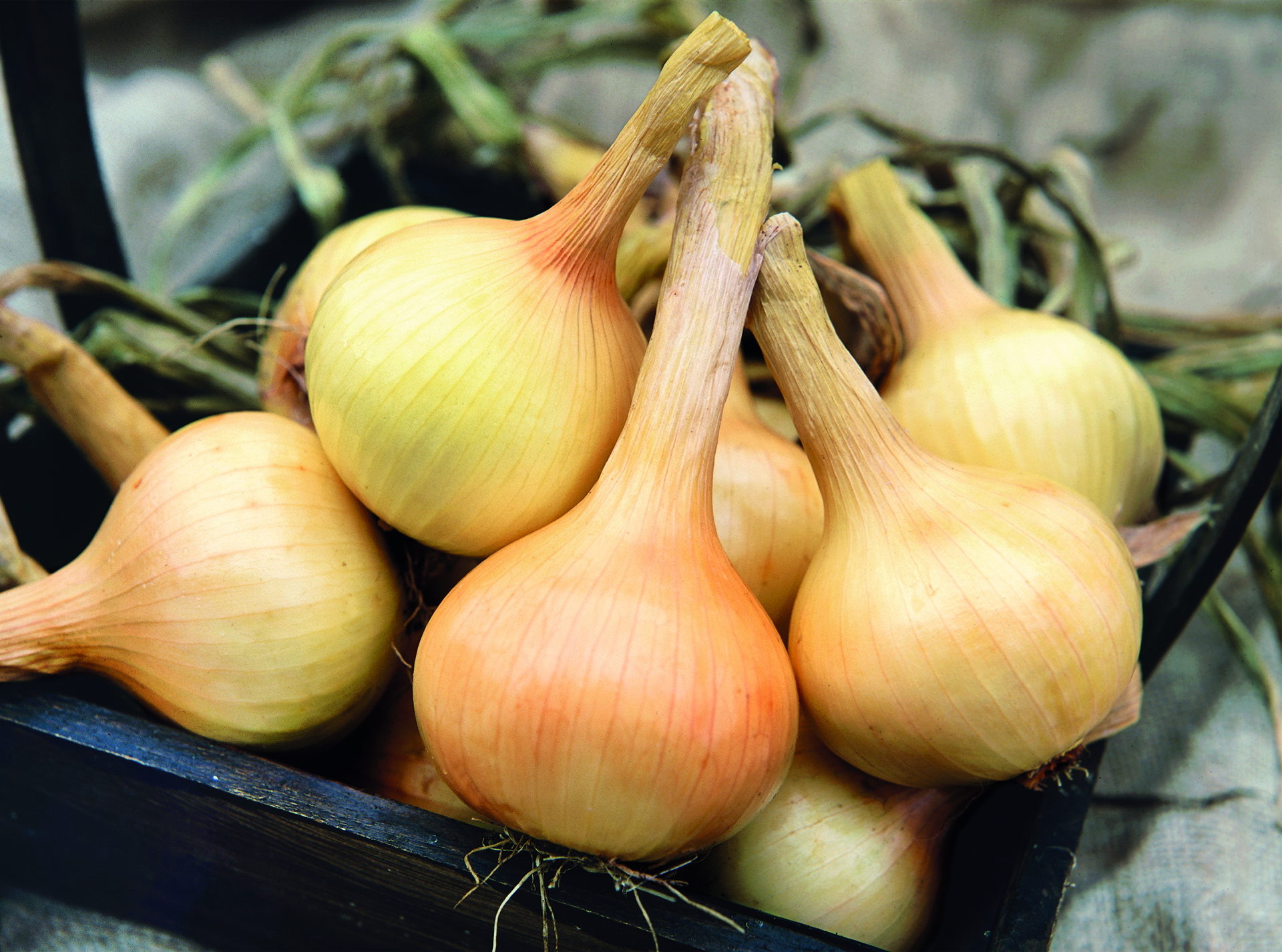
'The seed can be sown late December-April, planted outside in May and harvested August to October,' says Rob Smith.
This will follow the traditional two-year onion life cycle from seed to bulb, then to flower the following season.
To start onions from seed indoors:
- Sow seeds in a pot or tray of moist seed compost.
- Space seeds about 1/2 inch (13mm) apart.
- Place in a propagator or greenhouse at approx 60-68°F (15-20°C).
- When the seedlings are a few inches tall, prick them out and re pot into fresh, peat-free multi-purpose compost.
- In spring, plant established seedlings outside into the garden, in well-prepared soil, spacing 6inches (15cm) apart.
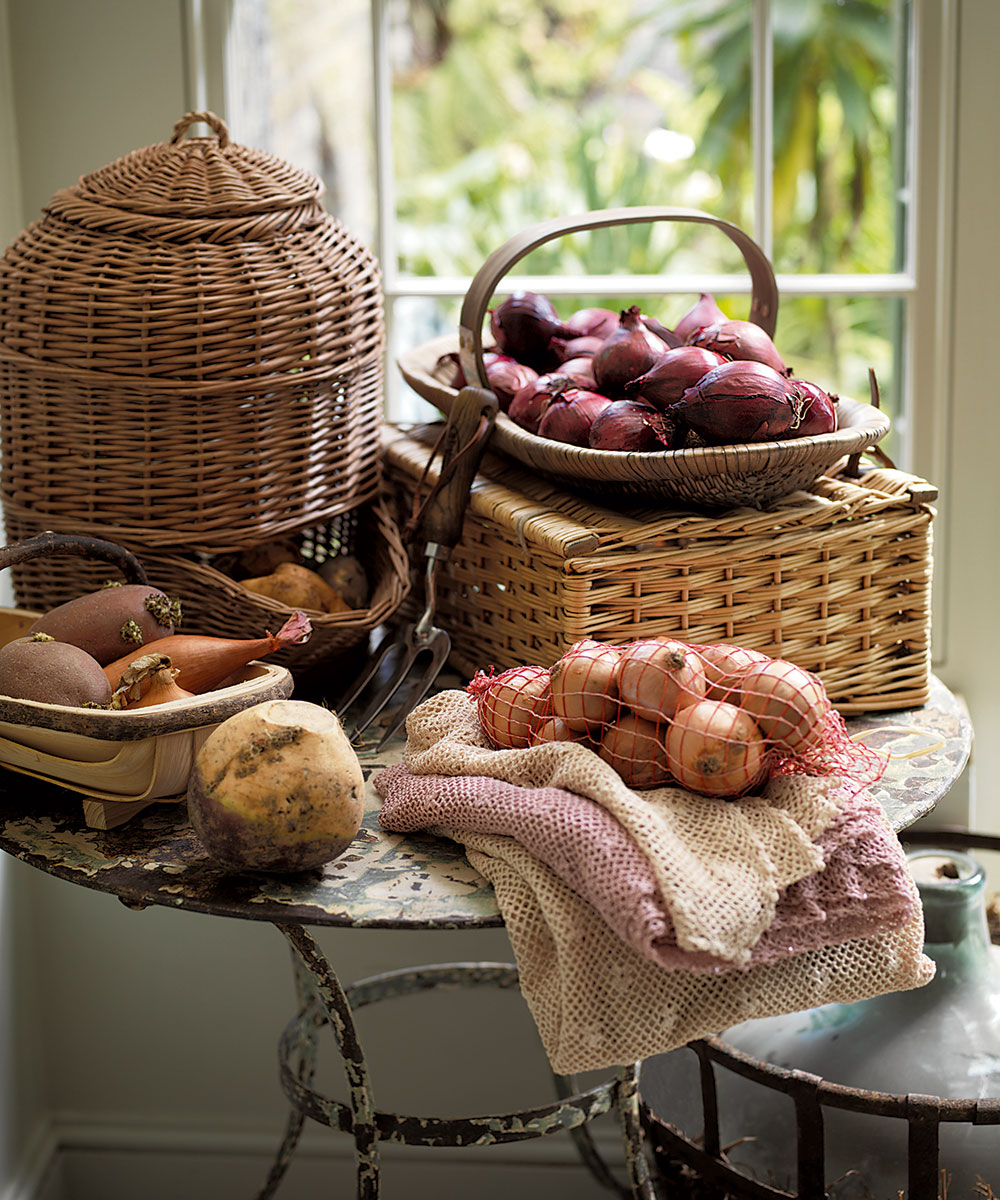
Alternatively, in spring you can 'sow seeds in a sunny or part shaded spot in the garden, from March or April when the soil has warmed,' explains Rob.
Sow onion seeds thinly from March to April into finely raked, firmed soil ½in (13mm) deep, in rows 12in (30cm) apart.
'The seeds will germinate in seven to 21 days. Thin seedlings to 4 inches (10cm) between plants and use these thinnings as scallions – or salad onions,' he adds.
How do you grow onions from an onion?
With a bit of care and patience, you can grow an onion from an onion. If you are growing the onion indoors, this can be done at any time of year.
For how to grow onions from scraps:
- Cut the bottom off a fresh onion - this can be one you have grown in your vegetable patch or a store bought onion.
- The bottom piece should be about 1in (2.5cm) long.
- Leave it sitting with the cut side up to dry for about 24 hours.
- Poke toothpicks in each side of the onion so that you can suspend it in a glass of water with just its root end submerged in the water.
- Place on a sunny windowsill.
- Leave it for 3-4 days until it begins to grow white roots.
- Fill a large plant pot with free-draining multi-purpose compost.
- Place the onion cutting with the roots facing downwards in the pot and cover with soil.
- You can divide the onion cuttings, leaving some of the roots on each, and plant these separately to produce more onions.
- Water and either keep the pot(s) indoors or outdoors in a sunny spot, depending on the weather.
- Water regularly and feed with a liquid fertiliser about every two weeks.
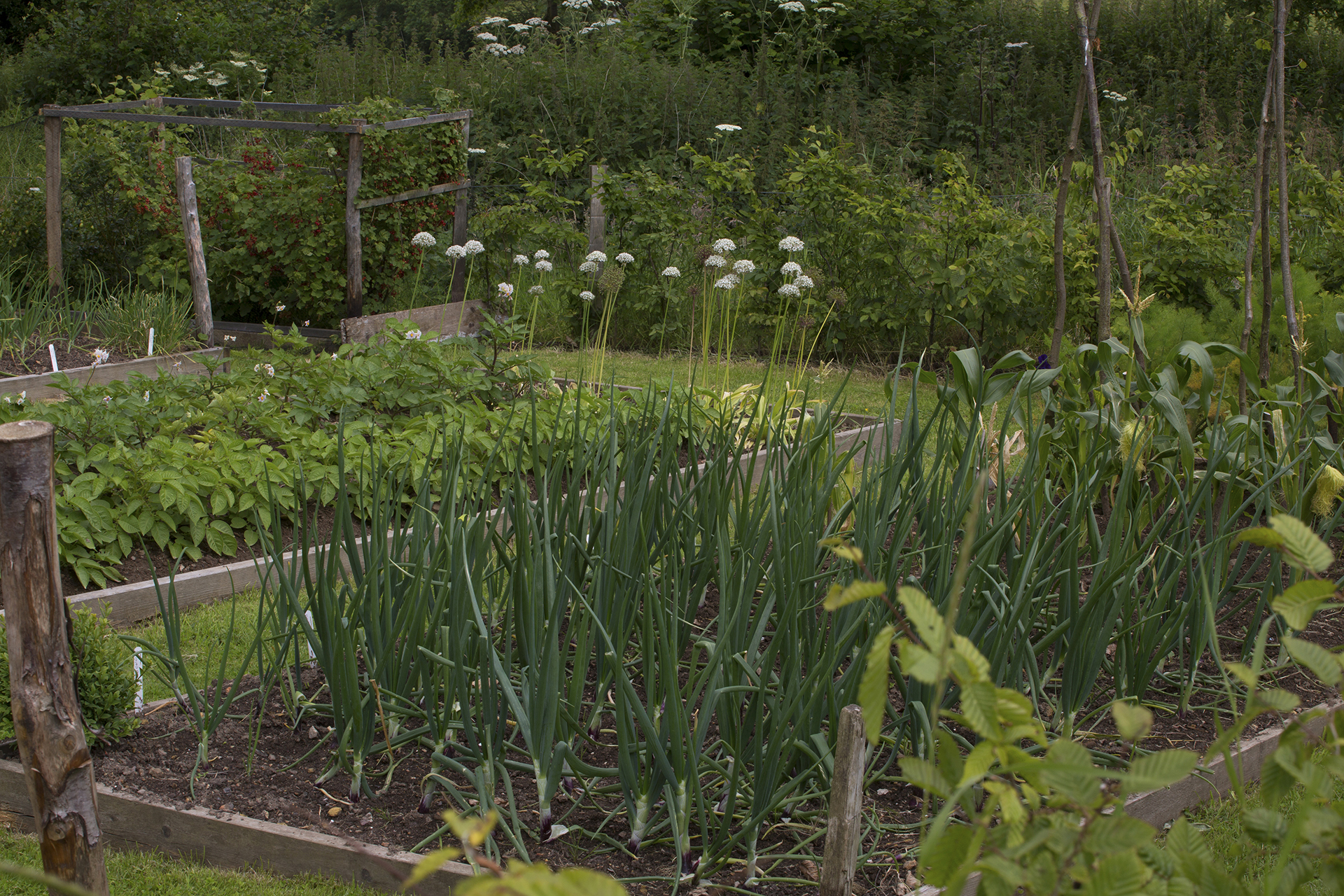
Do onions need lots of sun?
'Growing onions requires abundant sun and good drainage,' explains Amy Enfield of Bonnies Plants.
Raised beds built in a sunny corner of the garden are ideal for growing onions as then you can also ensure that the soil is just the right weight and texture for optimum growth.
Onions are a good option for crops to grow in a small vegetable garden where it is preferable to opt for easy to grow vegetables with a good yield.
Although onions need lots of sun, 'onion roots are shallow and not very efficient at taking up moisture, so they need a steady supply of water to grow without interruption,' adds Amy.
They can recover well from drought, but it is best to keep the soil consistently moist until the bulbs enlarge. Stop watering and feeding once the onions have swollen in mid-summer.
Remove any flower heads that appear, as these divert the plant’s energy from bulb development to seed production. Also keep the planting area weed free, weeding by hand, as the onions won't grow well if other plants are stealing their soil nutrients and water.

Harvesting onions
'To assist the ripening of the onions, gently loosen onion bulbs prior lifting,' advises Rob Smith.
When to harvest onions? The answer is that onions are ready to harvest when the foliage starts to turn yellow and topple over.
For sets that were planted in spring, this will be from late summer to early fall. Lift before the foliage dies down completely.
'Pull them up, shake off the soil, and lay them out to cure with the tops still attached,' advises Amy Enfield.
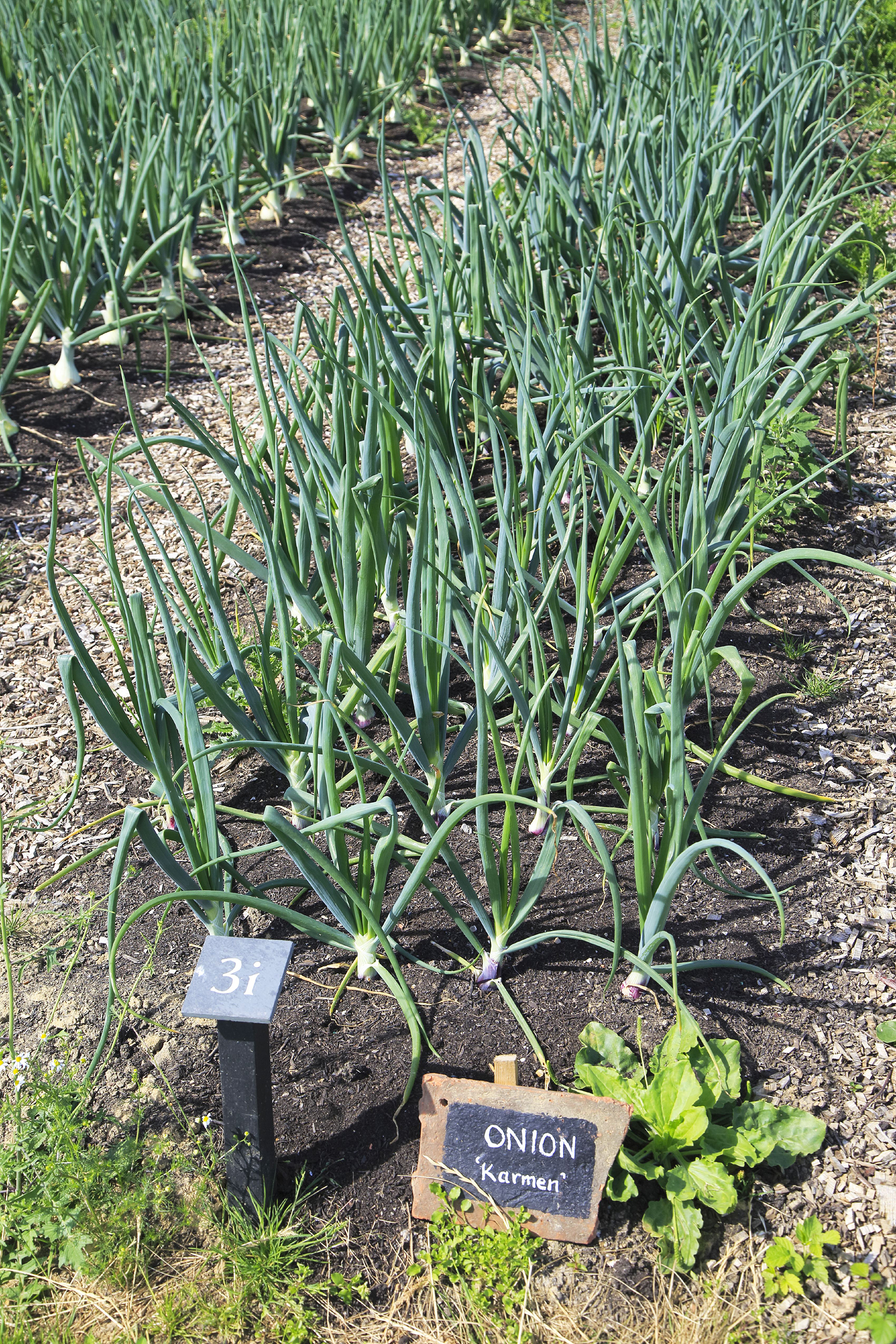
Storing onions
Once you have harvested your mature onions, place them on a table or rack in full sun outdoors, or in a well-ventilated greenhouse for about two weeks to ripen.
'Any warm, airy location is a good place to do this; you can even sling them over a fence as long as they aren’t rained upon,' says Amy.
As the onion bulbs dry, the foliage goes papery and the roots will shrivel – which means they will be less likely to rot. Only store onions with perfect, undamaged bulbs.
'After seven to 10 days, clip off the tops of the onions and the roots with pruning shears, and store your onions in a cool, dry place. Very sweet, juicy onions may be stored, wrapped in newspaper or paper towels, in the fridge,' adds Amy.
Then enjoy your crop of different onion varieties in a wide range of cooking.
Sign up to the Homes & Gardens newsletter
Design expertise in your inbox – from inspiring decorating ideas and beautiful celebrity homes to practical gardening advice and shopping round-ups.
Rachel is senior content editor, and writes gardening content for homesandgardens.com, Homes & Gardens magazine, and its sister titles Period Living Magazine and Country Homes & Interiors. She has written for lifestyle magazines for many years, with a particular focus on gardening, historic houses and arts and crafts, but started out her journalism career in BBC radio, where she enjoyed reporting on and writing programme scripts for all manner of stories. Rachel then moved into regional lifestyle magazines, where the topics she wrote about, and people she interviewed, were as varied and eclectic as they were on radio. Always harboring a passion for homes and gardens, she jumped at the opportunity to work on The English Home and The English Garden magazines for a number of years, before joining the Period Living team.
-
 Thoughtful modernism – how one Dallas home makes bold contemporary design feel warm, welcoming, and comfortable
Thoughtful modernism – how one Dallas home makes bold contemporary design feel warm, welcoming, and comfortableWith its mix of textural finishes and carefully curated furnishings, this modernist home is a refreshing retreat
By Karen Darlow Published
-
 'Wick away the ick' – 6 things people with clean laundry rooms always do to make this hardworking space shine
'Wick away the ick' – 6 things people with clean laundry rooms always do to make this hardworking space shineThese tips on how to clean your laundry room will banish grime
By Seraphina Di Mizzurati Published